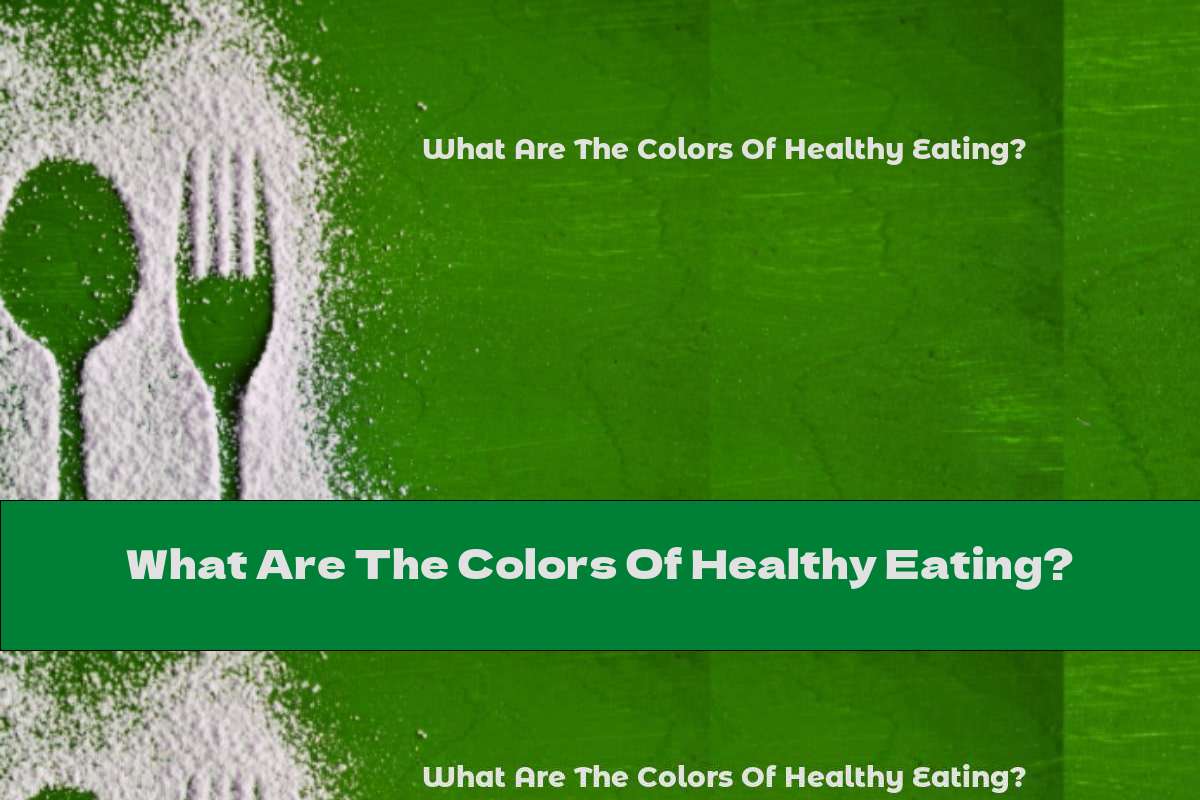What Are The Colors Of Healthy Eating?
 Author: Maryam Ayres
Time for reading: ~1
minutes
Last Updated:
August 08, 2022
Author: Maryam Ayres
Time for reading: ~1
minutes
Last Updated:
August 08, 2022

In this article, learn more about What Are The Colors Of Healthy Eating?. How is the usefulness of plant foods determined by their color?.
The World Health Organization recommends eating fruits and vegetables three to eight times a day. However, the amount of fruit is not the only key criterion in a healthy diet. Consumed fruits and vegetables should be as diverse in color as possible, because the color itself is an indicator of the usefulness of the plant product.
Red, blue and purple fruits and vegetables usually contain anthocyanins , and only red - lycopene . Anthocyanins have antioxidant properties that reduce the damage at the cellular level caused by free radicals and thus reduce the risk of cardiovascular disease, stroke, cancer, macular degeneration and memory loss. The brightest plant products also contain large amounts of vitamins and minerals, such as potassium, vitamin A, vitamin C and foils. Lycopene reduces the risk of cancer and heart disease.
Compounds in red and purple fruits or vegetables keep the body's vision and immune function in good health and reduce the risk of urinary tract infections.
The white color is obtained from polyphenolic compounds with antioxidant properties - anthoxanthins. They are also distinguished by their pronounced anti-cancer properties. Garlic contains allicin , which lowers blood pressure and cholesterol, preventing heartburn and heart attack.
Orange and yellow colors are due to carotenoids . They increase immunity, protect against some forms of cancer and promote good vision. Beta-carotene is vital to our body, since it synthesizes it vital vitamin A . Fruits with these flowers often contain potassium, bromine and vitamin C.
The green color is due to chlorophyll . Green plant foods contain the highest concentrations of antitumor indole , as well as lutein , which reduces the risk of cataracts and age-related macular degeneration. Vitamins A, C and K are abundant in them.
Related Articles
- Nutritional Benefits of Chicken with Beer: A Healthy and Flavorful Option
- The Nutritional Benefits of Boiled Cod: A Healthy and Delicious Choice
- Nutrition for Respiratory Health: Key Nutrients and Healthy Recipes
- Grilled Foods: Nutritional Benefits, Recipes, and Tips for Healthy Grilling
- Nutritional Benefits of Chicken with Beer: A Healthy Twist on a Classic Dish